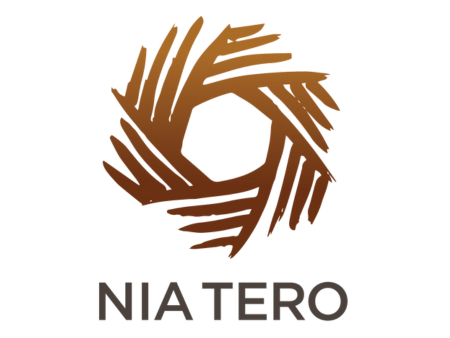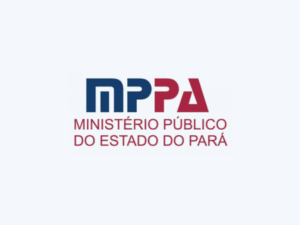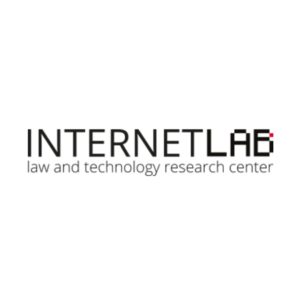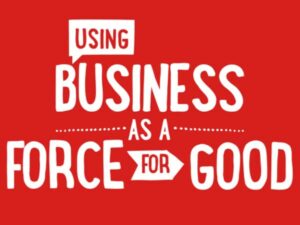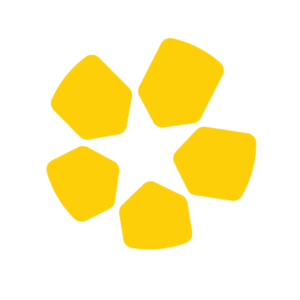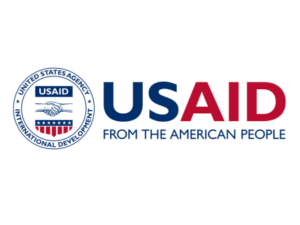Nia Tero works with Indigenous Peoples around the world to ensure that relevant global, national, and regional policies strongly support Indigenous guardianship, and reflect and align with Indigenous spirituality and culture.
David Rothschild and ‘Aulani Wilhelm of Nia Tero spoke with Jessica Kantor on February 6, 2024. Click here to read the full conversation with insights highlighted.
Jessica Kantor: Can you both introduce yourselves and your roles at Nia Tero?
David Rothschild: My name is David Rothschild, and I’ve been with Nia Tero since 2017. My role here is the Senior Director of Partnerships. I’ve been working alongside Indigenous Peoples for the better part of 30 years, mostly in the Amazon region. At Nia Tero, I’ve been part of building this institution and leading a couple of the programs here as well.
‘Aulani Wilhelm: I’m ‘Aulani Wilhelm. I’m from the Hawaiian Islands. The shores of Lahaina are my birth sands. Maunalua is where I was raised. I spent my early career working on behalf of my community to protect an extraordinary ocean realm that’s now referred to as Papahānaumokuākea, which encompasses an area of ocean expanse three and a half times the size of California. While size is important from an ecological perspective, what makes this area special for my community is that it’s the realm from which we descend from our eldest, non-human ancestor, the coral polyp. It is also where we will return when we depart the realm of the living. As such, the protection of this ancestral realm for its cultural significance as well as its natural heritage is inextricably linked.
Our approach to what most people refer to as ‘conservation’ looks very different for those of us who descend from these places. This initiative was spearheaded by Kanaka ʻŌiwi (Native Hawaiian) elders, fishermen, advocates, and scholars who remain engaged in co-management today and are actively working to ensure that future generations are brought on board. In short, I’ve worked at the crossroads of science, policy, community, culture, and conservation serving in non-profit and government roles, including the White House Office of Science and Technology Policy.
At Nia Tero, I lead strategy and external affairs. It’s a role that I’m excited about because I feel like these are areas of work that are critical to open source the idea that Indigenous guardianship of collective territory can and should happen everywhere possible on the planet.
Jessica Kantor: Can you describe what problem you’re addressing at Nia Tero and how you’re addressing it?
David Rothschild: Indigenous Peoples make up about 5% of the world’s population, but their lands are between 30 and 40% of the lands and waters of the planet. And they manage those lands. And they are also managing and caring for much of the biodiversity on the planet. And yet they do not receive the appropriate credit, support, partnership, or funding for managing their territories and lands, which they’re doing to the benefit of the rest of humanity. For all of us. We’ve seen more focus put on issues of climate change, biodiversity, and the environment, but that same level of importance has not been granted to the people who are caring for some of the most crucial areas on the planet. Some of what we’re trying to do at Nia Tero is to shift that, to help bring that support to Indigenous Peoples, especially those that are caring for territories that are important to them but are also ecologically significant to the rest of the planet.
ʻAulani Wilhelm: Humanity’s in a world of hurt right now. We’re facing an extraordinary confluence of crises. Climate change, biodiversity loss, and widespread human injustices and inequalities. But the most potent and proven solution to stave off planetary decline is a model of Indigenous guardianship – trusting the knowledge of the people who have been living in these places for generations, and who have reciprocity and relationality with these places. The best of what’s left on this planet rests in the hands of people who have consistently remained in place and in relationship with these lands. The one proven, durable solution that exists to protect healthy and thriving places is Indigenous guardianship.. We use a model based on trust, working alongside Indigenous communities that need support so that they can continue to live as they have been for millennia.
Jessica Kantor: How exactly are you engaging with and supporting Indigenous communities?
David Rothschild: A study showed that less than 1% of climate aid and funding programs have gone to Indigenous Peoples. And much less of those funds actually get to Indigenous organizations. So we provide funding directly to Indigenous peoples’ organizations and their chosen allies. Over the past few years, we’ve given over 85 million dollars to 271 different Indigenous Peoples and nations around the world. We write grants directly to Indigenous Peoples’ organizations and their partners, but we also have a number of in-house programs to support Indigenous Peoples and to advance Indigenous guardianship globally. Our grant-making work is focused in three regions: the Amazon, the Pacific Islands, and North America. Besides that, we have programs that provide support through public policy, utilizing international policy opportunities to advance Indigenous Peoples’ rights. We have a storytelling program to support Indigenous filmmaking, enabling our partners to create their own films, as well as a communications program. There are a number of areas where we see opportunities for us to support our partners to advance their self-determined vision.
Jessica Kantor: Are you only working with organizations that already exist, or are you also going into communities and garnering participation there?
‘Aulani Wilhelm: Our ability to build trusted relationships with communities is probably our key currency. And that’s across the board, whether we’re working in the policy space, telling stories, or supporting people in telling their own stories, maintaining their narrative sovereignty. We have an Indigenous advisory council that guides us. We’ve sought their input since the beginning, to understand where we can make the most impact that’s additive to the work already being done in these program areas.
We’re proud that in each of the regions we work in, the work is led by Indigenous Peoples from that region. Other organizations working in this space will sometimes enter these regions with the best of intentions, but when their funding runs out, or maintaining long-term relationships becomes difficult, Indigenous communities are left time and time again wondering what happened. That repeated pattern of broken trust is hard to repair. This work requires a commitment to the long haul and a willingness to listen to and understand why it’s often difficult to be trusted.
At its core, our work is about relationship building and being as flexible as possible in providing resources in a way that is guided by the community receiving those resources, not by what we think should happen in that place. And there’s an inherent tension in that funding mechanisms are often not flexible enough to allow for that.
Jessica Kantor: How do you scale globally and create systemic change while also making sure that the responses are still culturally specific?
David Rothschild: Our approach with partnership involves establishing trust, providing funding over time, and getting to know them. And while this work can be complex when dealing with different relationships, it is replicable. One of the things we’re trying to do is to galvanize financial investment in Indigenous Peoples around the world. We’re inviting people into the tent to show them that this is crucial, doable work. We want as many equivalents of Nia Tero existing in the world as possible — we don’t want to grow to become a single entity serving everybody. What we want to see is replication around the world, across many different regions, supporting many different Indigenous Peoples.
We’re doing what we can to make this happen. We’ve spun off a few organizations, and we’re working with donor collaboratives to drive more funding to Indigenous Peoples. We have a methodology for our partnerships in different regions: we support a specific set of partners that are strong examples of guardianship in a way that supports the whole national movement for Indigenous rights across that country, driving global support to Indigenous Peoples.
‘Aulani Wilhelm: I’ve been asked about the issue of scaling a lot. And it’s true that our work will differ widely from culture to culture. But I don’t see it as very different, for example, from those working to solve the global water crisis: saving water here in Honolulu isn’t going to help anybody in Kenya. Or if we think about it in terms of schooling: we can’t run an educational program here that’s going to make any sense in the UK, much less make sense in Ecuador, because these are fundamentally different places. Our work is based on our principles, values, and goals, but how the work happens should necessarily be grounded in place. And when I say “in place”, I really mean physical spaces. Peoples, languages, traditional customs — that’s what creates culture. We have this global goal, and we want to push towards that goal, but we have to work in a way that respects the spaces we’re working in.
David’s focusing on how we go in, build trusting relationships with our partners and provide them with the flexibility they need. But I don’t see this work as different from any other issue people are trying to tackle at a global scale. Our strategy of helping diverse Indigenous Peoples village by village is echoed in so many approaches to other global problems people are trying to solve.
David Rothschild: As an example, we engaged with Indigenous leaders from around the world, enabling many of them to participate in the Convention on Biological Diversity negotiations and the 30 by 30 Agreement that is part of the Kunming-Montreal Global Biodiversity Framework. With input from Indigenous leaders from around the world, the convention approved language for the protection of biodiversity: we need 30% of the planet, earth, lands, and waters to be protected by 2030. The Indigenous negotiators ensured that it’s not just protected areas or parks to be used to measure that 30% mark, but that the 30% is also to include Indigenous territories. This means that Indigenous territories are taken into consideration and governments are recognizing the important role that Indigenous Peoples play in safeguarding the land. The Indigenous leaders also ensured that safeguards for Indigenous rights and human rights were built into that agreement. So international law has been shaped by the interventions of Indigenous peoples, which we contributed to by bringing many of them together and supporting their engagement at the Convention of Biological Diversity negotiations.
Jessica Kantor: Can you share another example that illustrates the impact of your work?
David Rothschild: I’ve been working in the Amazon for most of my career. One of my favorite examples of our work comes from the Tumucumaque region, which is an Indigenous territory in the northern Brazilian Amazon. It’s a massive territory, well over three million hectares. We’ve been working with the Indigenous Peoples in that territory since Nia Tero was founded in 2017, and one of the things that they’ve expressed is the need for a monetary fund to support their territory in perpetuity. Something that’ll allow them to be truly self-determined, not dependent on us, not dependent on the government, not dependent on other organizations or companies, but that will allow them to manage their own culture and their territory.
We’ve been supporting them for years and recently secured a $10 million contribution from a donor, and to that, we contributed an additional $5 million. So we have now secured for them $1 million dollars a year for the next 15 years. Our vision is that they’ll become more independent of outside influence, they’ll be able to secure their own territory, and they’ll grow according to their own self-determined vision. This is exactly our vision: helping Indigenous Peoples and territories to be fully self-determined, secure from external influence, and live according to their own values.
Jessica Kantor: What are the success metrics that you’re tracking?
David Rothschild: For each of the territories where we’re working, we measure our governance, we measure their management of the territory, we measure the threats. And we do an assessment as to how these elements have changed over time so that we can understand our impact. We also have a system by which we track carbon emissions across the territories we work with, but a lot of that is done remotely through remote sensing and satellites.
We’re also working with partners around biocultural monitoring. We’re helping our partners to identify the indicators that they choose to measure over time. That program is still in development, so we don’t have a ton of data on that yet. However, there are five elements of guardianship that we look at when determining success.
‘Aulani Wilhelm: When I was working with my own community, people would ask us, “How do you measure your success?” And some people would respond, “Sovereignty,” using this political term as a defining metric. But when I talked to my brother who’s an Indigenous farmer, he wasn’t thinking about it from a political standpoint. His success metric was whether or not he’d have the ability to work the land that he needed with enough water to grow food. And while that’s a very specific metric for him and for the island, it highlights a desire for agency and an ability to do what’s needed. You can measure sovereignty in terms of productive land units, stability in water resources, or many other different elements. So that’s the first element that we look at.
The second element is governance. This requires, assessing if there’s a strong system for Indigenous guardianship in place, or if colonized systems have taken root and imposed their own rules, provoking clashes in governance. So we assess the level of tension and risk present in the governing body.
The third element is protection – assessing a territory’s ability to stave off anyone who’s trying to take away their agency. Whether it’s illegal mining, people attempting to take their land, or challenge their legal rights, we ask: What kinds of protections are in place?
The fourth element is cultural vitality. What kinds of practices do we see uniting this community, and is there a sense of vibrancy and ability for the culture to continue to evolve? Or is it static and held in a box?
The last element is finance. I think of this as resourcing, which includes people. Is adequate resourcing available to sustain change and growth over the long term? So again, sovereignty, governance, protection, cultural vitality, and resourcing or finance.
Jessica Kantor: When you’re tracking these elements, are you using self-reported data from the communities themselves?
David Rothschild: Some of it is our own assessments and some of it is self-reporting. We don’t have all five self-reported from all of our partners right now, but we’re near that.
Jessica Kantor: Are you moving towards fully self-reported data, or do you want to keep the balance of some assessments happening on your end and some being self-reported?
‘Aulani Wilhelm: We want to move towards co-developed findings. As outsiders assessing a territory, we have a different way of seeing those progress indicators. But if it’s all self-reported, the issue becomes translating that data into something that other dominant cultures will absorb and understand, allowing the idea of Indigenous guardianship to take hold. Part of our work is helping people to see that what for some may seem like difficult barriers, like tracking and reporting impact measurement, are not insurmountable.
David Rothschild: Some things are simpler for us to measure than others. The finance, the size of the territory, the carbon stuff, all of it is tracked regularly without issue. But for other elements, we have to work more closely with our partners and develop it together.
Jessica Kantor: Are there any specific lessons that you’ve learned along the way that stand out?
David Rothschild: The core of what we do is function as a new kind of funder that works in close collaboration with our Indigenous partners, with an emphasis on developing relationships and trust. It’s important that we ensure our goals are identical to our partners’ goals because that changes the power structure. All funders want to avoid a funder-grantee relationship where there’s an unequal power dynamic, and to some extent there always is. But when you have the same goals and you’re strategizing together, being totally transparent about what’s happening, that’s a different kind of relationship than most donors have with grantees. We’ve learned that achieving that kind of relationship is about being authentically present, being with them on their journey and ensuring that our vision of what we want to do matches theirs. We’ve been funding many of our Indigenous partners every year since shortly after Nia Tero began, and we plan to continue to for many years. It’s a long-term, trusted partnership.
The other key lesson we’ve learned is to not get in the way of work that our partners are doing and to think of our institution’s work as opening the door for independent donors. The funding doesn’t have to come through Nia Tero — people can fund partners directly, or have it go through us. Either way, what we want is to bring more funding to Indigenous peoples, and in doing so, take ourselves out of the equation.
Ultimately we’re trying to more broadly shift the way people partner with Indigenous communities. We’re trying to show by doing, by walking the walk, while also sharing these opportunities with others. One of the beautiful lessons learned along the way has been that our partners appreciate us bringing others in, and they will often ask us to help them reach other donors.
‘Aulani Wilhelm: Issues with funding and institutional governance are tough. They’re intergenerational. And because we’re working with communities who sometimes have diametrically opposing worldviews, it’s not easy. So you’re not going to see change magically happen overnight, and tempering expectations is key.
Another lesson is that there’s a myriad of issues facing Indigenous Peoples, who themselves are on a continuum. Some people have legal rights, some do without. Some are far along on the road of decolonization and regaining power, and some are not. Some are uncontacted people who have little or no connection to the outside world, and some have lived within colonial systems for generations. As resources become limited and the population grows, so do the opportunities for conflict. As a startup, we’re still trying to uncover and understand what it is that we can bring.
It’s not just about what kinds of issues are going to be tackled, but where. You can’t go into a community with your outside assumptions about their most important issue — unless you’re listening and building relationships, you’re not going to know. So that’s another lesson: we need to stop heroically swooping into these communities with our capes, however well-intentioned we may be. Because when we do that, we bring a well-intended paternalistic point of view or arrive at a solution that might make more sense in a neighboring territory.
This work takes true co-engagement. It has to be a give and take in working together to arrive at any of these solutions and especially to find a durable and sustainable solution. A choice Nia Tero made was to be a bridging organization, not an Indigenous organization. We’re not here to speak on behalf of anyone. We’re here to be allies and supporters, to spread the importance of Indigenous guardianship, not only for peoples and territories but for all of us. It’s important for every organization to think about where they fit within the ecosystem of supporting and resource-providing.
No organization can do any of this alone, and there’s so much need to be met that we have to resist competition, and this mindset of scarcity. Abundance comes from having an abundance mindset, from putting into a system instead of fighting over the limited things that are already there. We can apply that mindset as mixed communities of people doing the best we can to ensure we all have a livable planet.
The last thing I’ll say is about the mindset of time. There are so many short-term timescales that we place value into, like the funding cycle or the political cycle. But many Indigenous Peoples are thinking on an intergenerational time scale. Thinking generations ahead is also grounded by understanding the generations who came before — it’s all connected. What we’re seeing now and we will see in the future have had cycles in the past. This conception of time is sometimes difficult for people to integrate with the demands of shorter timescales.
Jessica Kantor: What do you think is most needed from other actors and other partners in order to advance systems-level change?
David Rothschild: The easy answer is funding to go directly to Indigenous Peoples organizations. But it’s not quite that easy, partially because there are so many restrictions on funds. When you look at government funds like bilaterals, a lot of that money is restricted, and it’s very difficult for it to actually reach Indigenous People’s organizations. So we need to figure out ways to open up the gates for greater amounts of funding to go directly to Indigenous Peoples organizations. For many of the institutions focused on working with Indigenous Peoples, it’s so much easier to fund an NGO than it is to fund a community-based organization. So the community-based organizations that are actually representative of Indigenous Peoples are the ones that have the hardest time raising funds. And yet those are the ones that are defending crucial territories, some of the most important lands and waters on the planet.
‘Aulani Wilhelm: I want to see more willingness to sit at different tables and an openness to learning about the impacts of the sector that you’re in and whether you’re preventing or threatening Indigenous guardianship. All these places, people, cultures, and languages: what is at risk? You can’t plan an action without being able to think through that. Funding alone isn’t going to solve the problem, because you need a good mindset in place first for that funding to make a difference. We also need to see more courage in the face of these crises. We can’t keep going about our lives with a business-as-usual attitude. We have to have the courage to do things differently and to do them quicker. Time is running out.
So it’s that tension between openness and courage that every sector needs to really contemplate. They need to know what they’re bringing to the table and what they’re taking away. And we need to start identifying our shared values. Among Indigenous Peoples, decision-making often starts with naming core values. Every culture has values, but which ones are serving the livability of the planet and which ones are not? These are hard choices.
David Rothschild: We need more seats at the table for Indigenous Peoples for issues dealing with Indigenous Peoples, and a greater voice in decision-making about anything that affects Indigenous lands. In most countries, Indigenous Peoples may have the rights to the lands where they live, but not all the lands that they use. Under international law, all Indigenous Peoples have the right to all the lands they occupy and use. And that right is not being fulfilled. About 40% of the planet is being managed by Indigenous Peoples, but they only have the territory rights to about 10%. So there’s a huge opportunity there.
Jessica Kantor: How do you see your work evolving over the next five years?
‘Aulani Wilhelm: I come from that long-view perspective, that big dream of making Indigenous guardianship everywhere possible. But that’s not in the next five years. So what can Nia Tero do? What can our collaborators and partners do? What can other people, and other organizations in this space do? We can focus on building an appetite and inspiration for our existing partnership models. We will eventually arrive at that point where we’re open-sourcing and sharing what it is we’ve learned, and people can choose the places that they feel closest to and invest where it makes sense for them. And as Indigenous Peoples learn about what’s happening in other communities, they can develop the courage to find partners and say, “We want to do that too.”
That’s when we go from slowly plodding along to everything coming together at once. It’s not that simple, and the time frame is longer. But we have to think about how we pivot from model development to influence policy, to tell not only our story of what we’ve learned but to make space for the stories of others. To collectively build the conditions to make that big dream possible.
David Rothschild: In our first five years, we’ve partnered with 271 different peoples across 125 million hectares of land and waters. It’s a beautiful constellation of strong examples of Indigenous guardianship, where Indigenous Peoples are looking after their territories. But we haven’t expanded into new regions since then, because we focused our first five years on building those partnerships and putting that solid grounding into place. So in the next five years, we will continue to support them and expand our partnerships. The idea is to share our vision much more broadly and to replicate it in more areas so that we can move closer towards that vision of Indigenous guardianship everywhere. We want this to become a global movement with examples all over the world of Indigenous guardianship being celebrated and supported.
We’re now in a great spot to do that because when we first started, we were just thinking about getting the work done and creating our partnerships. But now we’re shifting priorities to think beyond the work we’re doing with our partners to share and expand this model.
Jessica Kantor: Do either of you have any final thoughts?
Aulani Wilhelm: We’re doing this work for those next generations of kids so that there’s a future that they can believe in where people share in abundance with one another. I hope that the combined perspectives of David and I have brought some richness to the conversation.
Click here to read the full conversation with insights highlighted.
Jessica Kantor is an independent journalist specializing in health, human rights, and social impact. Her work can be found in Fast Company, Healthcare Quarterly, The Las Vegas Review-Journal, and others. She is a living kidney donor.
* This interview has been edited and condensed.
Find other social innovations that support Indigenous Peoples.

